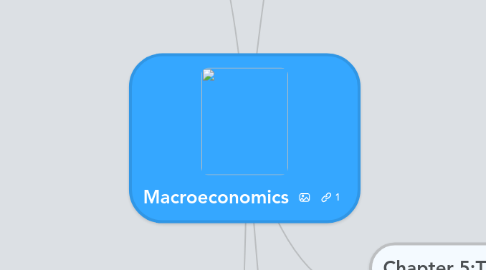
1. Chapter 1 :macroeconomics
1.1. Macroeconomic performance
1.1.1. definition
1.1.2. the supply side policies(medium and long term)
1.1.2.1. competition
1.1.2.2. entrepreneurship
1.1.2.3. capital goods
1.1.2.3.1. research and development
1.1.2.3.2. technology
1.1.2.3.3. innovation
1.1.2.4. labour
1.1.2.4.1. education,training,skills
1.1.2.4.2. performance related pay
1.1.2.4.3. decreased union power
1.1.2.4.4. reduced benefits
1.1.2.4.5. lower income tax
1.1.2.4.6. immigration
1.1.3. trend output and actual output
1.1.3.1. graph
1.1.4. business cycle
1.1.5. normal rates of capacity utilisation
1.1.6. spare capacity and full capacity
1.1.7. output gap
1.1.7.1. positive output gap
1.1.7.1.1. inflation and unemployment
1.1.7.2. negative output gap
1.1.7.2.1. inflation and unemployment
1.1.8. recession
1.1.9. inflation
1.1.9.1. demand-pull inflation
1.1.9.2. cost-push inflation
1.2. the circular flow of income
1.2.1. households and firms
1.2.1.1. monetary flow
1.2.1.2. real flow
1.2.1.3. withdrawal=s+t+m
1.2.1.4. injection=i+g+x
1.3. macroeconomic performance
1.3.1. demand-side policies(short and medium term)
1.3.1.1. fiscal and monetary policies
1.3.1.2. effects on positive output gap and negative output gap
2. Chapter 2: Economic Growth
2.1. introduction
2.1.1. National output=National expenditure=National income
2.1.2. GDP
2.1.2.1. IPD(flow out and flow in)
2.1.2.1.1. Balance of these inflows of outflows:NPIFA
2.1.2.2. GNP=GDP+NPIFA
2.1.3. income is not the same as wealth
2.2. real and nominal values
2.2.1. real GDP=nominal GDP - inflation
2.2.2. nominal values:expressed in current prices=money terms(compare to real terms)
2.2.2.1. money GDP money wages
2.3. economic growth
2.3.1. definition
2.3.2. long term
2.3.2.1. productive capacity increases
2.3.2.2. Supply side policies
2.3.3. short term(the percentage change in real GDP)
2.3.4. diagram
2.3.4.1. long term: shift outwards
2.3.4.2. short term:move on to the frontier
2.3.4.3. capital goods:shift more
2.3.4.4. consumer goods: shift less
2.3.5. distinction between levels and rates of change
2.3.5.1. GDP growth:in percentage
2.3.5.2. recession
2.4. AD and AS analysis
2.4.1. demand-side policies and supply-side policies
2.4.2. long-term growth(graph)
2.4.3. AD=C+I+G+(X-M)
2.4.4. A change in price leads to movement along:1.AD curve 2.AS curve
2.4.5. short run and long run
2.4.6. definition
2.4.7. the diagram
2.4.8. output gap diagram(LRAS doesn't shift)
2.5. GDP per capita
2.5.1. living standard
2.5.2. not measure welfare
2.6. index number
2.6.1. in order to compare numbers
2.6.2. index number=......
3. Chapter 3:Unemployment
3.1. definition
3.1.1. measure
3.1.1.1. Claimant count
3.1.1.2. Labour Force survey
3.2. causes and curing unemployment
3.2.1. Cyclical unemployment
3.2.1.1. negative output gap
3.2.1.2. Demand-side policies
3.2.2. structural unemployment
3.2.2.1. decline in old industries, workers wrong skills
3.2.2.2. supply-side policies
3.2.3. frictional unemployment
3.2.3.1. people in between jobs
3.2.3.2. supply-side plocies
3.2.4. seasonal unemployment
3.2.4.1. regular fluctuations
3.2.4.2. supply-side plocies
3.2.5. classical unemployment
3.2.5.1. real wage above the labour market equilibrium
3.2.5.2. supply-side plocies
3.3. the cots of unemployment
3.3.1. loss of income
3.3.2. lose skills
3.3.3. government pay benefits
3.3.4. low tax revenue
3.3.5. forgone output
3.3.6. runs inside ppc
3.3.7. indicator to full capacity
4. Chapter 4:Inflation
4.1. Introduction
4.1.1. definition
4.1.2. measure
4.1.2.1. CPI or RPI
4.2. Measuring Inflation
4.2.1. CPI(official)
4.2.2. typical basket of goods
4.2.3. RPIX
4.3. Causes of Inflation
4.3.1. demand-pull
4.3.1.1. demand-side
4.3.1.1.1. graph
4.3.2. cost-push
4.3.2.1. supply-side
4.3.2.1.1. graph
4.4. Why is inflation a problem
4.4.1. government promote a fair distribution of income
4.4.2. savers to borrowers
4.4.3. higher wages
4.4.4. country less competitive
4.4.5. reduction in investment
4.4.6. menu costs
4.4.7. price signals will become blurred
4.5. curing Inflation
4.5.1. suppress the level of economic growth
4.5.2. supply-side policies
4.5.3. demand-side policies
4.5.3.1. monetary policy
4.5.3.1.1. bank of england
4.5.3.2. fiscal policy
4.6. Evaluation
4.6.1. monetary policy.......
4.6.2. fiscal policy..
4.6.3. Supply-side policies
4.7. Deflation
4.7.1. definiton
4.7.2. 3 dangers
4.8. Factors that the rate of inflation in real world
4.8.1. wage growth
4.8.2. the exchange rate
4.8.3. immigration
4.8.4. information technology
4.8.5. globalisation
5. Chapter 5:The Current Account
5.1. Introduction
5.1.1. more choices
5.1.2. closed and open economy
5.1.3. international division of labour
5.2. The balance of payments
5.2.1. balance of trade in goods+balance of trade in services+net income inflows+net transfers
5.2.2. current account deficit
5.2.3. visibles and invisibles
5.3. Factors affecting the current account balance
5.3.1. demand side and supply side
5.3.2. chains of reasons
5.3.3. inflation higher
5.3.4. non-price factors
5.4. exchange rate
5.4.1. definition
5.4.2. depreciation and appreciation
5.4.3. SPICED
5.5. Current account and macroeconomic performance
5.5.1. X as a part of AD
5.5.1.1. diagram
5.5.1.1.1. chain of reasons
5.5.1.2. diagram
5.5.1.2.1. chain of reasons
5.5.2. EVALUATION
5.5.3. A table(summary)
5.6. Improving the economy's external performance
5.6.1. expenditure dampening
5.6.2. expenditure switching
5.6.3. non-price competion
5.6.4. WTO: against protectionist policies
